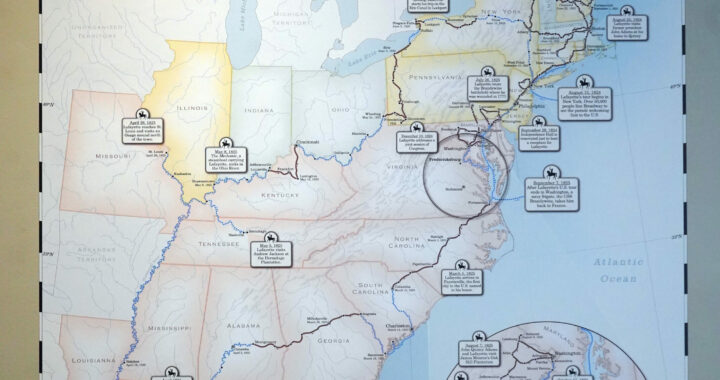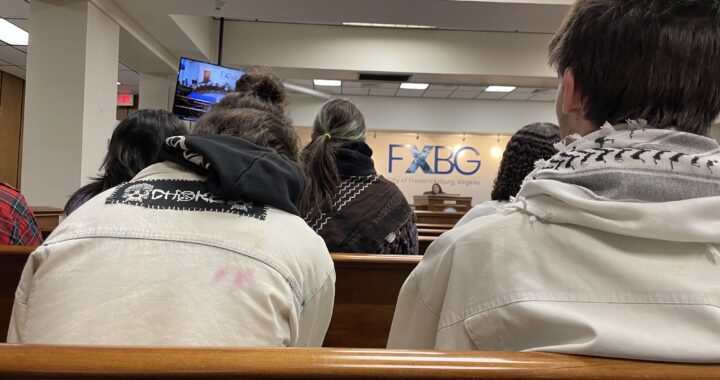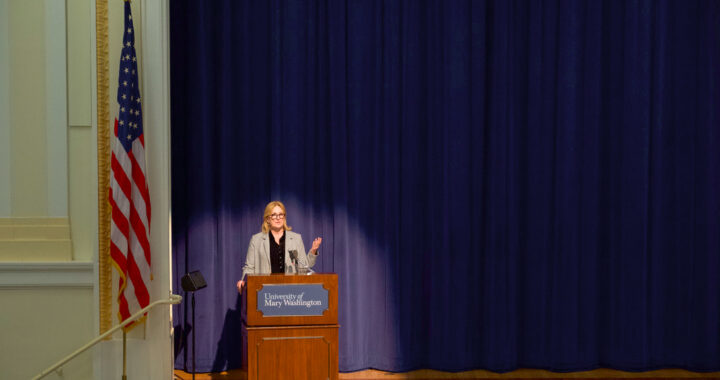No Plans for the Ampitheatre
3 min readBY KAT SAUNDERS
Some students do not even know it exists.
The amphitheatre, built in 1923 and used for ceremonies and plays during much of the University of Mary Washington’s history, has long past, but no one seems to have any plans for its future.
It rests, surrounded by trees, in the wooded area behind Trinkle Hall, obscured by overgrown plants and ongoing construction. Most of its benches have been removed; the ones on its columned stage have been broken or knocked over.
According to Vice President of Facility Services John Wiltenmuth, there are currently no plans to repair or renovate the space.
“It has not been given priority consideration,” he said in an e-mail interview.
A 1993 Bullet article decried the theater’s condition fifteen years ago this October. A “Save the Amphitheatre” campaign was launched by the student Senate, resulting in the Board of Visitors designating $40,000 to repair the space in 1997. The changes made the Amphitheatre safe enough to save it from demolition, but a decade later, the discussion on what else to do with the theatre remains halted.
“We have not discussed the Amphitheater for some time,” Vice President Richard Hurley said. “We just have too many other projects that need to be done that, in our opinion, have been more important to pursue particularly given the scarcity of funds.”
Still, the theater’s condition is a concern to both student and faculty.
“I think it’s unfortunate. It’s definitely been neglected,” said Douglas Sanford, chair of the Historic Preservation Department.
Sanford praised the University of Mary Washington’s efforts to preserve history on campus, citing the maintenance of a Civil War embankment as a recent success. However, he said that the Amphitheatre needs attention and should be maintained.
“I think it’s a useable space,” he said. “It’s still an attractive space.”
Senior Jacqueline Wright, president of the Historic Preservation Club described the space as forgotten, but valuable to the University.
“The space is a wonderful cultural resource for our campus, one that is telling of our history as a liberal arts institution and full of memories of past student activity there,” she said. “The space has been neglected by Mary Washington in recent years and seems to have been forgotten about as an additional space for groups to use.”
Wright said that the Historic Preservation Club was considering doing a clean up project for the theatre and encouraging the University to put up a historic marker.
“Other preservation majors would agree that the best thing we can do for the space is to make it ADA compliant, put some lighting in, and put up a sign that gives attention to it and what it was once used for,” she said.
The theatre is cleaned several times a year by Facility Services, but is not compliant with the American Disabilities Act. Wiltenmuth said he would not recommend the space be used for either official or private events.
For now, the space will remain a run- down but private space for the occasional student. Administrative attention remains focused on other projects, including renovating Monroe Hall and planning for across Route 1.
“We see this on all campuses. There’s gonna be a competition for space and resources,” Sanford said. “The question is, how do you balance your historic resources with your modern needs?”











